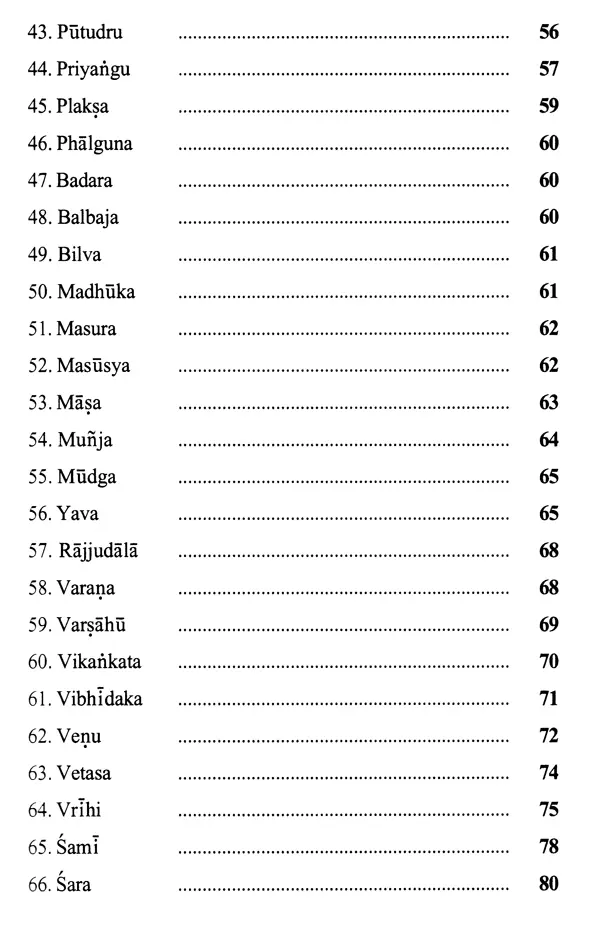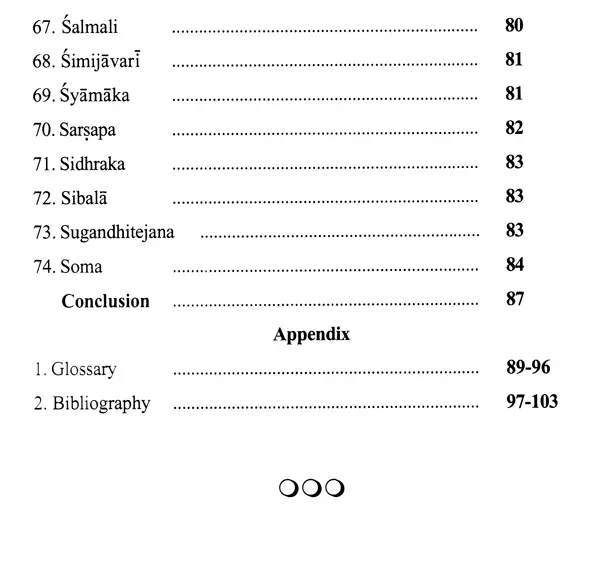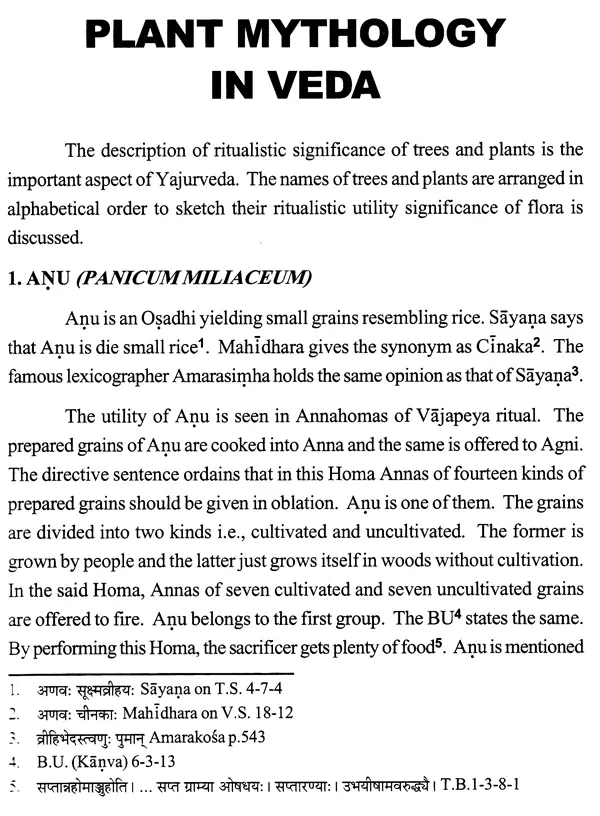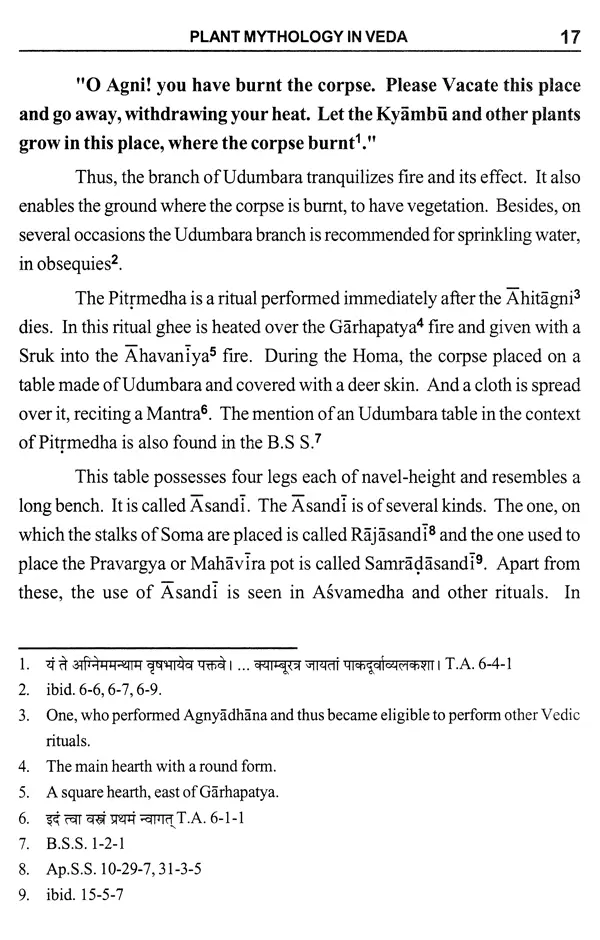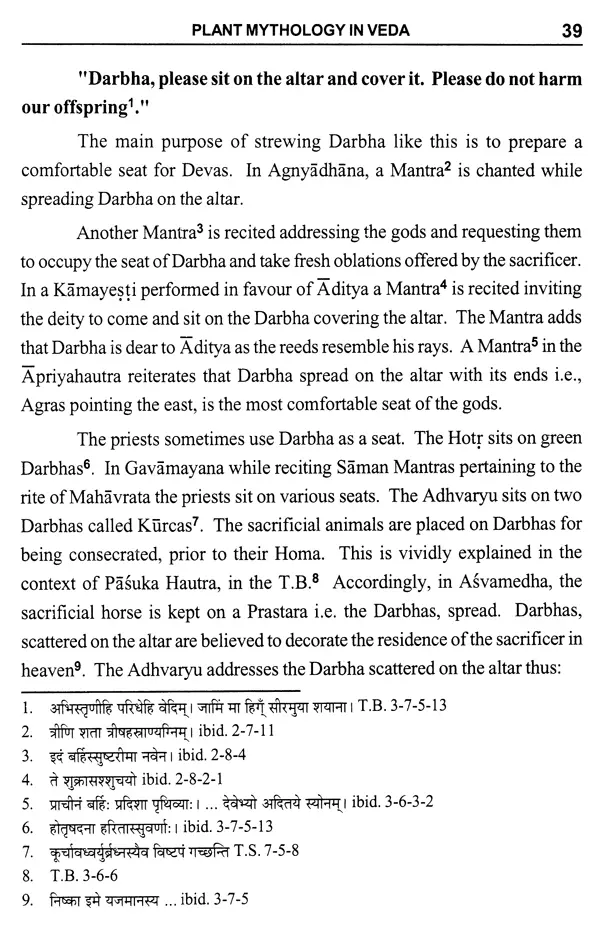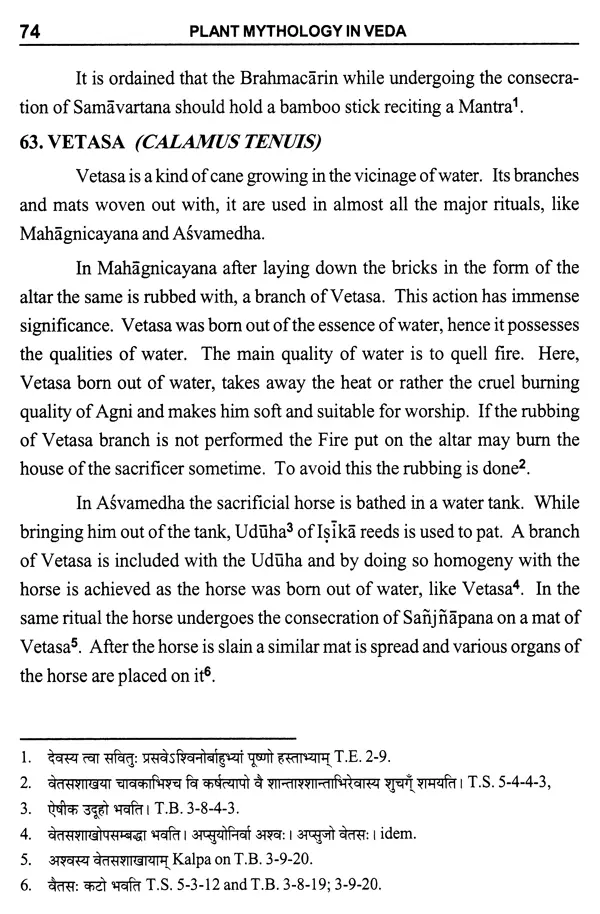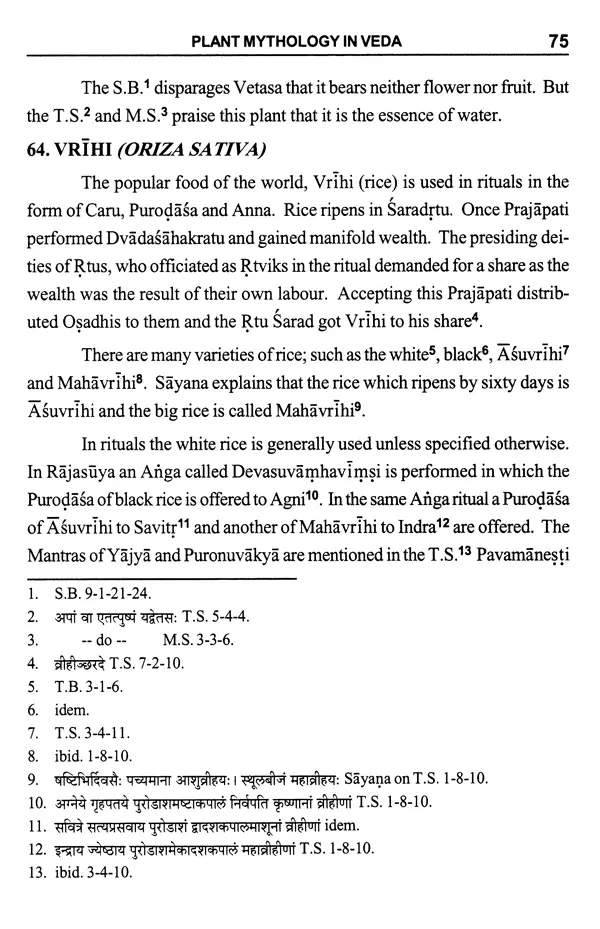
Plant Mythology in Veda
Book Specification
| Item Code: | UAV953 |
| Author: | Sannidhanam Sudarsana Sarma |
| Publisher: | SRI VENKATESWARA VEDIC UNIVERSITY,TRIUPATI |
| Language: | English |
| Edition: | 2021 |
| ISBN: | 9789381887998 |
| Pages: | 120 |
| Cover: | PAPERBACK |
| Other Details | 9.50 X 6.50 inch |
| Weight | 220 gm |
Book Description
The present work is based on my doctoral thesis that was awarded in 1980s. When my father began to teach me Vedabhäşya after fully memorizing the Krsna Yajurveda, I developed an admiration towards the subject of utility of trees and plants in Vedic rituals. Out of curiosity, I undertook a special study of the trees in "Vidyaranya Bhäşya" that increased my level of interest significantly. In 1978-79, 1 presented a paper "The Trees of Taittiriya" in A.P. Oriental Conference held at Visakhapatnam. To my luck, Dr. R.N. Dandekar, Director, Bhandarkar Oriental Research Institute, Pune who was attracted by the subject matter, asked me to pursue the same for my Ph.D. In fact, having registered as a Research Scholar under guidance of Prof. P. Srirama Murti, Dept. of Sanskrit, Andhra University, I was in search of suitable research problem. Dr. Dandekar, further, persuaded my guide to get the topic of plants pursued by me and he obliged me. I could bring out a successful thesis only because of the backing of knowledge of Vedabhäṣya provided by my beloved father. "Sangasvadhyāyabhaskara" Sannidhanam Lakshmi narayana Murthy, Awardee of "Räshtrapati Puraskara".
Though the thesis was published in 1989, very soon it has gone out of print. There has been an increasing demand. The Dept. of Research & Publications, S.V. Vedic University in their pursuit of publishing books of Vedic Sciences came forward to bring out the present book with the title of "Plant in Veda" which is based on a chapter of my thesis.
Rituals have played a significant role in the way of life of the people of ancient India. The main purpose of rituals is to serve the interests and welfare of the people'. Though the performance of rituals is confined to certain categories of people, the results thus achieved are enjoyed by all. In olden times, even powerful kings considered the sages, as harbingers of welfare to the state, because of their regular performance of Vedic rituals. It is pointed out by the great poet Kalidasa -
"Oh! Sage Vasistha! the oblations you offer to the Fire result in rain for the crops withering due to scarcity of water?"
History records that rituals like Aśvamedha and Rajasuya were being performed by kings to maintain the sovereignty of the State and to establish aristocracy.
The Vedic ritual is a source of achieving ends not only to human beings but also to gods and sages. Aditi performed a ritual and got Devas as sons. Several Brahmana texts tell us that Devas could occupy Svarga, empowered by the performance of a ritual. The deities do often perform rituals Prajapati performed Dvädaśähakratu, appointing the presiding deities of Rtus as priests.
Book's Contents and Sample Pages



